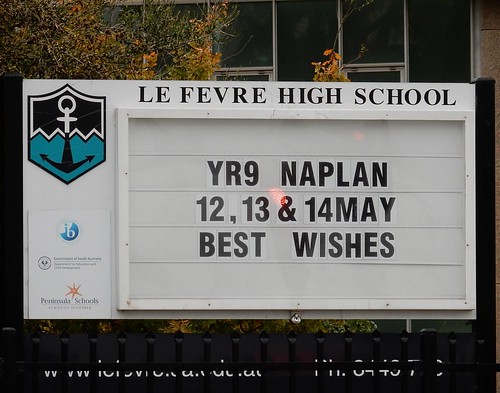One in 10 students are falling behind on literacy and numeracy, revamped Naplan finds
NAPLAN #NAPLAN

One in 10 students are not meeting Naplan standards in literacy and numeracy and students with high levels of socioeconomic disadvantage are even less likely to be keeping up.
This year’s Naplan test was the first held entirely online in term one, not term two, with tougher proficiency levels and a new measurement scale.
The “time series” dataset was also fully reset with the new testing methods, meaning 2023 results can’t be compared with previous years.
Under the reformed system, students are assessed against four levels of proficiency: “exceeding”, “strong”, “developing” and “needs additional support”.
The latest results, released on Wednesday, found about 65% of students across age cohorts were meeting literacy and numeracy expectations, while 23% were “developing”.
chart showing the average percentage across all Naplan test types and year groups
“With expectations set at a higher level than in previous years, the new reporting is showing those areas where we need to focus our efforts,” the Australian Curriculum, Assessment and Reporting Authority (Acara) chief executive, David de Carvalho, said.
“The results also continue to highlight the educational disparities of students from non-urban areas, Indigenous Australian heritage and those with low socioeducational backgrounds.”
New South Wales had the highest percentage of students across age groups in the “exceeding” category for numeracy, grammar and spelling.
It also had the highest percentage of primary school students excelling in writing, while Victoria took over once students reached year 7. The ACT had the highest percentage of students excelling in reading.
The Northern Territory recorded the highest group in the “needs additional support category”, with more than 30% of students failing to meet proficiency standards across all categories and age cohorts.
chart showing Naplan results by remoteness area
It also had the least students “excelling” across all metrics, sitting well below the national average – from two to four times less likely to excel.
Investment in public education has gone backwards in the Northern Territory since the federal government’s Gonski reforms, which aimed to improve student outcomes, were announced in 2008.
On its current trajectory, it is expected it will never reach 100% of the Schooling Resource Standard (SRS) recommended by the Gonski review, a needs-based model to provide a baseline education to students.
Victoria had the lowest percentage of students needing additional support, indicating less of a disadvantage gap.
The disparity in outcomes between students based on their geography and backgrounds was “in line with expectations”, De Carvalho said.
“We certainly hope results will improve, which to a large extent will depend on how ministers and education ministers decide to respond to results,” he said.
skip past newsletter promotion
Sign up to Afternoon Update
Our Australian afternoon update breaks down the key stories of the day, telling you what’s happening and why it matters
Privacy Notice: Newsletters may contain info about charities, online ads, and content funded by outside parties. For more information see our Privacy Policy. We use Google reCaptcha to protect our website and the Google Privacy Policy and Terms of Service apply.
after newsletter promotion
Australian Education Union president, Correna Haythorpe, said the figures were “unacceptable” and pointed to the need for full funding of public schools.
“We can’t close the achievement gaps without closing the resources gaps,” she said. “Public schools educate most of the students with higher needs and yet only 1.3% of our schools are funded to the SRS. In the NT where student needs are highest, the public schools are the most underfunded in the nation.”
Students in high socioeconomic areas and in cities substantially outperformed their counterparts in all aspects, with results worsening the further students were from metropolitan areas.
Almost 50% of students in very remote areas were in need of additional support, compared with just under 10% (7.9%) of students in major cities.
Similarly, just under 10% of students were in the “need additional support” category, compared with a third of First Nations students.
chart showing showing the average percentage across all Naplan test types and year groups
The Acara chief emphasised making comparisons to previous years was “not appropriate” due to the decision to reset the time series, made by education ministers after the 2020 independent review into Naplan to set a “new and better baseline” for the future.
It means schools are unable to determine whether their scores had improved or worsened, though De Carvalho said the results were now “more precise”.
Some 1.3m students in about 9,400 schools participated in this year’s tests. Following the move online, participation rates picked up after a decline over Covid, increasing two percentage points to 93%.
The results also found a difference in outcomes by gender. Girls continued to outperform boys in literacy and writing, while boys generally outperformed in numeracy.
The Naplan results are a precursor to the Programme for International Student Assessment (Pisa) study, due to be released at the end of the year.
The most recent test, which measured the performance of 15-year-olds on mathematics, science and reading, was the worst result Australia has recorded.
While Naplan isn’t comparable to international tests, De Carvalho noted Australia’s historic results in Pisa were “certainly of concern” to ministers.